Maruti Baleno [2019-2022] Zeta
- Baleno [2019-2022]
- Specs & Features
- Variants
- Colours
- User Reviews
![Maruti Suzuki Baleno [2019-2022] Zeta Maruti Suzuki Baleno [2019-2022] Zeta](https://imgd.aeplcdn.com/664x374/cw/ec/37710/Maruti-Suzuki-Baleno-Right-Front-Three-Quarter-147420.jpg?wm=0&q=80)
![Maruti Suzuki Baleno [2019-2022] Left Side View Maruti Suzuki Baleno [2019-2022] Left Side View](https://imgd.aeplcdn.com/664x374/cw/ec/37710/Maruti-Suzuki-Baleno-Left-Side-View-147411.jpg?wm=0&q=80)
![Maruti Suzuki Baleno [2019-2022] Left Front Three Quarter Maruti Suzuki Baleno [2019-2022] Left Front Three Quarter](https://imgd.aeplcdn.com/664x374/cw/ec/37710/Maruti-Suzuki-Baleno-Left-Front-Three-Quarter-147416.jpg?wm=0&q=80)
![Maruti Suzuki Baleno [2019-2022] Front View Maruti Suzuki Baleno [2019-2022] Front View](https://imgd.aeplcdn.com/664x374/cw/ec/37710/Maruti-Suzuki-Baleno-Front-view-154112.jpg?wm=0&q=80)
![Maruti Suzuki Baleno [2019-2022] Front View Maruti Suzuki Baleno [2019-2022] Front View](https://imgd.aeplcdn.com/664x374/cw/ec/37710/Maruti-Suzuki-Baleno-Front-view-154119.jpg?wm=0&q=80)
![Maruti Suzuki Baleno [2019-2022] Dashboard Maruti Suzuki Baleno [2019-2022] Dashboard](https://imgd.aeplcdn.com/664x374/cw/ec/37710/Maruti-Suzuki-Baleno-Dashboard-147413.jpg?wm=0&q=80)
![Maruti Suzuki Baleno [2019-2022] Dashboard Maruti Suzuki Baleno [2019-2022] Dashboard](https://imgd.aeplcdn.com/664x374/cw/ec/37710/Maruti-Suzuki-Baleno-Dashboard-154122.jpg?wm=0&q=80)
![Maruti Suzuki Baleno [2019-2022] Steering Wheel Maruti Suzuki Baleno [2019-2022] Steering Wheel](https://imgd.aeplcdn.com/664x374/cw/ec/37710/Maruti-Suzuki-Baleno-Steering-Wheel-154131.jpg?wm=0&q=80)
Maruti Baleno [2019-2022] Zeta Review
Introduction

If a car is priced under Rs 10 lakh and wears a Maruti Suzuki badge it is destined to be successful. But the Baleno is very important to Maruti for very different reasons. It is their first foray into the premium hatchback segment which is dominated by Hyundai’s classy i20. The Baleno is also the second model to be sold out of the more premium Nexa group of dealerships. After Nexa took a big hit with the unenthusiastic response for the overpriced S-Cross, the pressure is on Baleno’s small car shoulders to justify Maruti’s premium marketing tactics.
On paper, the Baleno has all the ingredients to do just that. It looks masculine, has sedan-rivalling cabin space, it comes powered by proven engines and has loads of features to justify its premium positioning. Unlike the S-Cross, Maruti has got Baleno’s pricing spot on with it undercutting the i20 and the Honda Jazz by a considerable margin.
Design and Style

Based on the new ‘liquid flow’ design language, Maruti has attempted to make the Baleno look muscular and flowing and to a certain extent, they are successful too. There’s no doubt the Maruti Baleno does turn heads; it’s got a purposeful stance and the wide body lends it strong road presence.
Dominating the front-end styling is the V-shaped grille, which is flanked by a pair of projector headlamps which also feature daytime-running LEDs as part of the top Alpha trim. But the headlamps which are reminiscent of the old Swift look a bit too small compared to the rest of body. We especially like the rising window line and the flowing curves on the doors which gives the Baleno a very modern look.
It’s from the rear that the Baleno looks the most attractive. The stubby boot lid, chiselled bumper and strong shoulder bulges lend it a lot of character. However, we feel that Maruti designers went overboard with the some detailing on the Baleno. This is apparent with the front wheel arches which have massive bulges and make the Baleno look too front heavy when seen in profile. Even the large chrome strip running across the boot looks over the top.
The Baleno is based on an all-new Suzuki platform and the main target for the engineers was to keep body mass as minimum as possible. As a result, even the fully loaded Alpha trim weighs just 910kg in the petrol CVT trim and the Alpha diesel tops the scales at 985kg. This was achieved using high-tensile steel and other modern methods. So obsessed were the Suzuki engineers that they went in favour of lightness over torsional rigidity which is less than the Swift. The Baleno is a big car with a massive 2520mm wheelbase, length is a whisker under four metres and 1745mm wide. To put things into perspective, the Baleno is 40mm longer and a massive 51mm wider than the Honda Jazz, which was considered to be a big hatchback. The Baleno is underpinned by a standard MacPherson struts up front and a non-independent torsion beam suspension setup at the rear, while stopping duties are carried out by a conventional front disc and rear drum arrangement.

Interiors

Unlike the stylish exterior, the cabin looks more mainstream and Maruti has kept things simple. The dashboard though minimalistic is smartly styled, with the large touchscreen infotainment system dominating proceedings. The Delta trim which is the only variant the automatic car comes with, gets a traditional music system which looks a bit downmarket. The touchscreen system on the top Alpha variant also features CarPlay which is an India first. The screen itself is crisp and oozes of quality. The same can’t be said about the rest of the cabin though. Plastic quality and fit and finish though decent is not as nice as the Hyundai i20 or even the Honda Jazz. Lower down and on the door pads it’s apparent that Maruti has cut corners and plastics feel hard and shiny. There are many bits shared with the cheaper Swift too, like the power window switches, steering wheel, stalks etc.

Thanks to the massive exterior the roomy cabin doesn’t come as a surprise. The front seats are big, supportive and have acres of legroom. Thanks to the height-adjustable driver seat and the steering which adjusts for reach and rake, finding your ideal driving position is easy. But, if you really want the sense of space, there’s no place like the rear. There’s enough legroom here for the tallest of people unless you’re Shaquille O'Neal. The headroom isn’t equally generous though thanks to the swooping roofline. The bench itself is comfortable with a perfectly angled backrest. On the downside, the seat squab is a touch too short and the bench is flat which doesn’t offer enough lateral support. There are plenty of storage spaces in the cabin in the form of multiple cubby holes but the glovebox is tiny. The boot at 339litres is humungous but the lid opening is quite high and narrow, which makes loading heavy bags a shoulder straining affair.

Safety and Equipment

In the top Alpha trim the Baleno comes equipped with touchscreen infotainment system which houses Apple CarPlay, navigation and a music system. Apart from this the Baleno gets all the basics like climate control, key-less go, reverse camera with sensors, auto headlamps, daytime running lamps and a comprehensive trip computer with a colour screen on the instrumentation. The Baleno CVT however comes only in the mid Delta variant and it misses out on important features like touchscreen interface, key-less go, reverse camera, parking sensors, trip computer, alloy rims and fog lamps. In terms of safety, Maruti sets a new benchmark by offering two airbags and ABS as standard across the range.

Engine, Performance and Braking

The Baleno is powered by the same pair of petrol and diesel motors that does duty in the cheaper Swift. As the Baleno weighs nearly 100kg less than its smaller sibling it can get away with identical motors.
The Baleno petrol automatic is powered by a 1.2 litre motor which is good for 83bhp and 115Nm of torque. As soon as you start the motor it settles down to a near silent idle. In peak hour stop-go traffic, we found the transmission well suited to the characteristics of the engine with notably less of the rubberband effect usually associated with CVTs. Whether ambling in town or cruising at 80kph, the transmission keeps engine speeds within the 1200-2000rpm bracket for best efficiency. Part throttle responses are good too with a linear build of power from the 83bhp petrol motor. As a result, overtaking slower traffic isn’t much of an effort. If there’s a negative, it’s at full throttle, where revs are held at 5500-6000rpm (for max power) and make the engine sound loud and strained, but that is expected of a CVT transmission. In our flat-out acceleration tests, thanks to its low weight and responsive gearbox the Baleno automatic managed to post good times. It took 13.3 seconds to reach 100kph and the roll-on sprint from 20-80kmph is dispatched in a decent 7.41 seconds. The feeling of a rubberband effect as you go faster is reflected in the 40-100kmph time, which the Baleno does it in a rather sedate 10.17 seconds.

The diesel Baleno, on the other hand, is powered by the familiar 1248cc 74bhp engine. Twist the key and the engine settles into a smooth albeit slightly audible idle. As there is no replacement for displacement, you’ll discover a bit of hesitation at low revs from the small capacity motor. But still the Baleno delivers power quite smoothly when the turbo comes on. Still, it’s not as immediately responsive as the 1.5-litre Honda or even the 1.4 Hyundai motor, so you do need a bit of planning when you slot in and out of gaps.
Post 1800rpm is where the action is, and the strong mid-range is where you should aim to be when you are driving. The engine feels the most comfortable here and relatively smooth at mid-rpms. Past 4000rpm power starts to tail off and there is no point stretching it to its 5200rpm redline. So it’s best when you use the mid-range, upshift early and power on. In favour of better drivability, Maruti has employed shorter fourth and fifth gears. As a result, the Baleno recorded some decent figures in our acceleration tests. 100kph is reached in a respectable 12.6 seconds and even its in-gear times of 11.09 seconds for 20-80kph in third and 15.09 seconds for 40-100kph in fourth are par for the course. The gearbox too has short throws and require minimal effort.

Ride and Handling

The Baleno isn’t a car that will engage the keen driver. Though it has decent body control, it simply doesn’t have the readiness to change direction as the Swift and it’s certainly not a car that enjoys being hustled. Its strength lies in the way it displays good stability at speed and handling is very safe and predictable, with no nasty surprises. As a family car, meant for sedate driving, the direct and precise steering and easy controls make it a stress-free car to drive.
As for the ride, due to the light weight it does feels a bit jiggly at low speeds and not very adept at handling sharp bumps, and you can feel the suspension thump through the light body. Though it never gets to the point of being uncomfortable and it is something you can live with. However, as you go faster, it settles down to offer a fairly flat and consistent ride. The brakes on the other hand offer good bite and stopping power, but a more linear pedal feel would have been welcomed.
Price and Fuel Economy

In terms of fuel efficiency, the Baleno’s light weight has a big role to play. In the city, the petrol auto managed a very impressive 11.9kpl while out on the highway it managed to return a respectable 16.8kpl. The 1.3-litre diesel, on the other hand, was expectedly much more efficient. It returned 14.2kpl in the city and 19.6kpl on the highway. When you consider the diesel’s overall 15.5kpl (75 per cent city and 25 per cent highway), it gives it a fantastic range of around 575km before you need to refuel your 37-litre tank.
Maruti has managed to price the Baleno very well with prices starting from Rs 4.99 lakh for the best petrol and going up to Rs 8.11 lakh for the top diesel Alpha variant. This makes it marginally cheaper than the Hyundai i20 and around Rs 40-50 thousand cheaper than the Honda Jazz.

Specification
| CAR NAME | Maruti Baleno | |
| Variant | Delta A/T | Alpha |
| ENGINE | ||
| Fuel | Petrol | Diesel |
| Installation | Front, transverse | |
| Displacement | 4 cyls, 1197cc | 4 cyls, 1248cc |
| Bore/stroke | 73.0/71.5mm | 69.6/82mm |
| Valve gear | 4 valves per cyl, DOHC | 4 valves per cyl, DOHC |
| Power | 83.1bhp at 6000rpm | 74bhp at 4000rpm |
| Torque | 114.9nm at 4000rpm | 189.9nm at 2000rpm |
| Power to weight | 91.31bhp per tonne | 75.12bhp per tonne |
| Torque to weight | 126.2Nm per tonne | 192.7Nm per tonne |
| Gearbox | CVT | 5-speed manual |
| CHASSIS & BODY | ||
| Construction | four-door hatchback, monocoque | |
| Kerb weight | 910kg | 985kg |
| Tyres | 195/55 R16, 185/65 R15 | |
| Spare | Full-size | |
| STEERING | ||
| Type | Rack and pinion, electric assist | |
| Turning circle | 9.8m | |
| BRAKES | ||
| Front | Ventilated discs | |
| Rear | Drums | |
| Anti-lock | Yes | |
| PERFORMANCE & BRAKING | ||
| 0-20kph | 1.46s | 1.06s |
| 0-40kph | 3.41s | 2.65s |
| 0-60kph | 5.78s | 4.88s |
| 0-80kph | 8.99s | 8.24s |
| 0-100kph | 13.30s | 12.65s |
| 0-120kph | 19.59s | 19.45s |
| 0-140kph | 29.85s | 29.60s |
| 0-160kph | 52.01s | NA |
| 0-180kph | NA | NA |
| 0-200kph | NA | NA |
| 20-80kph in kickdown/3rd gear | 7.41s | 11.09s |
| 40-100kph in kickdown/4th gear | 10.17s | 15.09s |
| 80-0kph | 33.39m 2.91s | |
| FUEL ECONOMY | ||
| City | 11.9kmpl | 14.2kmpl |
| Highway | 16.8kmpl | 19.6kmpl |
| Tank size | 37 litres | 37 litres |
| Range | 485km | 575km |
| INTERIOR MEASUREMENTS | ||
| Front | ||
| Legroom(Max/min) | 860/630mm | |
| Headroom(Max/min) | 970mm | |
| Shoulder room | 1340mm | |
| Seat base length | 490mm | |
| Backrest height | 600mm | |
| Rear | ||
| Legroom(Max/min) | 870/650mm | |
| Ideal legroom | 750mm | |
| Headroom | 890mm | |
| Shoulder room | 1300mm | |
| Seat base length | 460mm | |
| Backrest height | 580mm | |
| Boot | 339 litres | |
| Length/width/height | 710/1010/590mm | |
| Loading lip height | 830mm | |
Specifications & Features
- Specifications
- Features
- Specifications
- Features
Specifications
Engine & Transmission
- Engine1197 cc, 4 Cylinders Inline, 4 Valves/Cylinder, DOHC
Timely services will keep a motor efficient and in top shape.
- Engine Type1.2L VVT
The official title given by the manufacturer in terms of the name of the engine, the displacement and the number of cylinders.
A bigger displacement and more than four-cylinders generally indicate a performance-oriented engine.
- Fuel TypePetrol
All cars in India either run on petrol, diesel, CNG, LPG or electric power.
- Max Power (bhp@rpm)82 bhp @ 6000 rpm
Gives a good idea of the performance of the vehicle under full thrust. A higher figure here usually means a higher top speed as well.
Higher the power, the peppier the engine but it can also affect fuel economy.
- Max Torque (Nm@rpm)113 Nm @ 4200 rpm
Relates to in-gear acceleration. A higher figure here means better roll-on acceleration, fewer gear shifts, and possibly better fuel efficiency.
The more torque at low RPM range makes the engine feel more responsive. It also allows the engine to run smoothly without too many gear changes.
- Mileage (ARAI)21.01 kmpl
This is the maximum fuel efficiency that an engine gives. All numbers are provided by the manufacturer based on tests conducted and specified by the standards of the ARAI (Automotive Research Association of India)
Such fuel efficiency attained while driving in special conditions makes it unlikely to get it in real-world conditions
- Driving Range777.37 Km
Approximate maximum number of kilometers which can be traveled on a full tank of fuel or fully charged battery
- DrivetrainFWD
Cars come with different drivetrain configurations depending on the segment.
Front-wheel drive (FWD) is most common in mainstream cars while expensive cars or SUVs come with rear-wheel drive (RWD) or all-wheel drive (AWD).
- TransmissionManual - 5 Gears
Type of transmission used to transfer power from the engine to the wheels
A manually operated transmission is the most popular type, thanks to its simplicity and low cost. Varied types of automatic transmissions are also available.
- Emission StandardBS 6
Set by the Indian Government, this governs the amount of air pollutants released by cars to make the atmosphere safer for humans.
Dimensions & Weight
- Length3995 mm
The length of the car decides its segment. In India, cars that are less than 4 metres in length enjoy reduced excise duties.
- Length: 3995
Longer length results in more cabin space. It also adds to straight line stability.
- Width1745 mm
A car's width is defined as its widest point without its mirrors.
- Width: 1745
Although more width gives you more lateral space inside the cabin, it makes the car more difficult to park in narrow spots.
- Height1510 mm
The height of the car denotes the highest point of the vehicle from the ground.
- Height: 1510
Taller the car, the more headroom there is on offer inside the cabin. However, a tall boy stance also affect the car’s centre of gravity which can cause more body roll.
- Wheelbase2520 mm
The space between the center of the front and rear wheels.
- Wheelbase: 2520
The longer the wheelbase, the more space there is inside the cabin.
- Ground Clearance170 mm
It’s the space between the lowest point of the car and the ground.
- Ground Clearance: 170
If the car has a good amount of clearance, it’s easier for it to clear big speed breakers and overall, deal with bad roads.
- Kerb Weight880 kg
The total weight of the vehicle with all the standard equipment and all the required fluids.
A lightweight car will always be more efficient and easier to manoeuvre whereas a heavy car would give you a sense of solidity while driving.
Capacity
- Doors5 Doors
The number of doors define the category of car. For example – four door means sedan, two-door means coupe while five-doors usually refer to a hatchback, MPV or an SUV.
- Doors: 5
- Seating Capacity5 Person
The number of people that can be seated comfortably in the car, which has also been mandated by the car manufacturer.
- Seating Capacity: 5
- No of Rows2 Rows
Smaller cars usually have two rows which can seat five, but some SUVs and MPVs have three rows and can seat around 7-8 passengers.
- Bootspace339 litres
Boot space defines how practical the car is with respect to how much luggage it can carry.
- Bootspace: 339
A boot with a large and wide opening is ideal for loading heavy items. Additionally, a lower loading height also makes it easy to put in luggage.
- Fuel Tank Capacity37 litres
The official volume of the fuel tank of a car, usually denoted in litres.
If a car has a large fuel tank, it can cover long distances without refuelling.
Suspensions, Brakes, Steering & Tyres
- Front SuspensionMcPherson Strut
Almost all cars in India use an independent front suspension which is usually the MacPherson Strut type.
- Rear SuspensionTorsion Beam
The rear suspension can either be non-independent or independent.
Most of the budget cars have non-independent suspension while the more expensive ones get independent rear suspension which offers better bump absorption.
- Front Brake TypeDisc
Most of the vehicles sold in India get ventilated or non-ventilated disc brakes upfront.
- The ventilated discs are more popular thanks to them providing better stopping power and it also works well in hot conditions.
- Rear Brake TypeDrum
In affordable cars, drums brakes are fitted at the rear as they are cost effective.
Disc setup at the rear is now getting more popular as cars are getting faster in the real world.
- Minimum Turning Radius4.9 metres
The official kerb-to-kerb minimum radius a car takes to complete a 180-degree turn.
Shorter the turning radius, the lesser space you need to make a tight turn or to take a U-turn.
- Steering TypePower assisted (Electric)
Almost all steering systems in cars today have an assist to help park them better at low speeds - these can be hydraulic, electro-hydraulic or electric.
- WheelsAlloy Wheels
The wheels used on cars are either steel rims with plastic wheel cover hub or alloy wheels on higher spec models or expensive cars.
Razor cut, or diamond cut alloy wheel design are not getting more popular. Manufacturers usually offer these in top-end trim of their car models.
- Spare WheelSteel
Important in a country with varying quality of roads, spare wheels ensure one doesn’t get stranded when one of the main tyres gets damaged.
Select premium car models feature space savers (smaller than the stock wheels) to save on boot space.
- Front Tyres195 / 55 R16
The profile/dimension of rubber tyre that fits on the front wheels.
- Rear Tyres195 / 55 R16
The profile/dimension of rubber tyre that fits on the rear wheels.
Features
Safety
- Overspeed Warning1 beep over 80kmph, Continuous beeps over 120kmph
Mandatory safety system for cars sold in India, a single beep is emitted after 80kmph and continuous ones after 120kmph
- Emergency Brake Light FlashingNo
The brake lights flash in a quick intermittent fashion to indicate to the following vehicles to slow down quicker than usual
- Puncture Repair KitNo
These enable users to repair a puncture effortlessly, saving the time/effort involved in replacing it with the spare wheel
Avoid driving on a flat/deflated wheel too long as it can cause expensive repairs
- NCAP RatingNot Tested
The official crash test safety rating given to a car by one of the many testing agencies around the world
- Airbags2 Airbags (Driver, Passenger)
- Rear Middle Three Point seatbeltNo
Safer three-point seatbelts for passengers seated in the middle of the second row of seats.
Budget cars are usually fitted with more economical lap belts for the middle-occupant.
- Rear Middle Head RestNo
A headrest for the middle occupant of the second-row of seats.
Budget cars are usually not offered with headrests for the middle occupant of the second-row to save on costs. Headrests are instrumental in reducing whiplash injuries in case of an accident
- Tyre Pressure Monitoring System (TPMS)No
A digital gauge that provides the live status of the air pressure in every tyre of a car.
For accurate readings, ensure that the sensors on the rim are not tampered with during any wheel/tyre repairs
- Child Seat Anchor PointsYes
Anchor points or strap systems built into car seats to keep child seats in place, especially during a crash
ISOFIX is an international standard for child seat anchor points, but not all car manufacturers follow this standard
- Seat Belt WarningYes
Mandatory fitment in cars sold in India, emits loud beeps when it detects that occupants are not wearing their seatbelts.
Seat belt warning is mandatory for front-seat occupants, but it is recommended that all occupants wear seat belts.
Braking & Traction
- Anti-Lock Braking System (ABS)Yes
An electronic system that prevents the tyres from locking and skidding in emergency braking situations by pulsing the brakes (quickly releasing and reapplying the brakes)
ABS is a great accident prevention technology, allowing drivers to steer while braking hard
- Electronic Brake-force Distribution (EBD)Yes
An electronic system that redirects braking forces among the four brakes to stop the car as quickly and stably as possible
- Brake Assist (BA)Yes
A system that increases brake pressure to help the car stop quicker
Even when emergency braking, it is observed that drivers don’t apply maximum brake pressure through the pedal, the BA system provides additional pressure to help stop the car quicker
- Electronic Stability Program (ESP)No
System designed to improve car stability and control, especially when the car is accelerating.
ESP or ESC cannot increase traction but rather improve control or help regain control in slippery conditions.
- Hill Hold ControlNo
A feature that prevents the car from rolling backwards when stopped on a slope
- Traction Control System (TC/TCS)No
This system cuts power to those wheels that are spinning without grip/traction
Given the option, keep traction control on all the time.
- Differential LockNo
Locking differentials split power/torque evenly among both tyres on an axle.
In off-road vehicles, locking differentials allows for better traction when one of the wheels is in the air, in FWD/AWD cars allows for better corner traction and in RWD sports cars allows for drifting around corners.
Locks & Security
- Engine ImmobiliserYes
A security device that prevents the engine from being started unless the key is present
- Central LockingKeyless
This feature let's one unlock all the doors remotely or with a key
- Speed Sensing Door LockYes
This feature automatically locks the car's doors when it reaches a preset speed
A convenient feature for those who can't remember to lock the doors
- Child Safety LockYes
Such locks are built into the rear doors to prevent rear seat occupants from opening the doors
Comfort & Convenience
- Umbrella Storage in Door-
- Air ConditionerYes (Automatic Climate Control)
The different types of air-conditioning systems used to cool the cabin
Maintaining the lowest temperature and first blower speed offers the best results.
- Front ACSingle Zone, Common Fan Speed Control
- Rear AC-
- HeaterYes
This feature allows warm air to pass through the air-con vents for heating the cabin
- Vanity Mirrors on Sun VisorsDriver & Co-Driver
Compact mirrors fitted to the inside of the sunvisor
- Cabin Boot AccessYes
The option of being able to access the boot space while sitting inside the car
- Anti-glare MirrorsElectronic - Internal Only
These mirrors negate the glare from headlight beams of cars behind you
Since a large chunk of people love driving around in their high beam, these mirrors come in handy
- Parking AssistNo
A feature that aids drivers park with ease and greater precision using sensors/cameras
It comes as a boon for drivers who are not used to parking in tight spots
- Parking SensorsRear
Sensors that are usually located on the bumpers of a car to assist/alert the driver while parking
It takes the stress out of manoeuvring in confined spaces
- Cruise ControlNo
A system that automatically controls the speed of the car
- Headlight and Ignition On ReminderYes
An alert that warns one from leaving the car with the headlight and ignition switched on
- Keyless Start/ Button StartYes
When fitted, this system allows the car to be switched on without removing the key from the driver’s pocket or vicinity.
Keyless entry and start/stop (KESS) systems in some cars also include operation via a smartphone.
- Steering AdjustmentTilt & Telescopic
A function where the steering wheel moves up/down, in/out as per the driver's requirement
When both rake and reach adjustments are incorporated, it makes for a tailormade driving position
- 12V Power Outlets2
This socket provides current to a cigarette lighter style 12 volt plug
It helps charge smartphones, tablets, laptops, rechargeable batteries and other USB chargers. It also powers a compressor that inflates tyres and the humble cigarette lighter!
Telematics
- Find My CarOptional
An app based feature that allows one to find where their car is located/parked
- Check Vehicle Status via AppOptional
The requisite app will provide information regarding various functions such as speed and fuel alerts
- Geo-fenceOptional
A service that triggers actions like notifications and security alerts when a car enters/leaves a set location
- Emergency CallOptional
A call that's made automatically by the car to the local emergency services in the event of a crash
- Over The Air (OTA) UpdatesNo
Similar to how smartphones receive updates, a vehicle too (if equipped with connected car features) receives updates over the air via a cellular or WiFi connection
Timely installation of updates keeps the system up-to-date
- Remote AC: On / Off via AppNo
The smartphone app turns on the car's AC to attain the required cabin temperature even before one boards it
More so comes in handy when cabin temperatures are extreme before you board the vehicle
- Remote Car Lock/Unlock via AppNo
The smartphone app allows one to remotely lock/unlock the car's doors from just about anywhere
This function is helpful when the key fob isn't working properly
- Car Light Flashing & Honking via AppNo
The smartphone app sounds the horn and flashes the headlights of your car so that you can locate it
- Alexa CompatibilityNo
Alexa is a virtual assistant technology that allows voice interaction to perform various tasks
An invaluable function that allows the driver to keep their eyes on the road
- Remote Parking with Key-
Seats & Upholstery
- Driver Seat Adjustment8 way manually adjustable (seat forward / back, backrest tilt forward / back, headrest up / down, seat height up / down)
- Front Passenger Seat Adjustment6 way manually adjustable (seat forward / back, backrest tilt forward / back, headrest up / down)
- Rear Row Seat Adjustment2 way manually adjustable (headrest up / down)
Rear seat adjustments make for an enlarged luggage space when there's lots of baggage to haul.
- Seat UpholsteryFabric
When it's time to replace, use a fabric that grips and are inherently cool to the touch
- Leather-wrapped Steering WheelNo
Leather not only grips your palms well, but it also offers a premium feel
- Leather-wrapped Gear KnobNo
- Driver ArmrestYes
The armrest located between the front passengers which helps comfort the driver's arm while driving
- Rear Passenger Seat TypeBench
- InteriorsSingle Tone
Depicts if the cabin comes with a single or dual-tone colour scheme
- Interior ColoursBlack
The various color shades used within the cabin
- Rear ArmrestNo
- Folding Rear SeatFull
Some rear seats have the option to be be folded to offer more practicality
- Split Rear Seat60:40 split
Sections of the rear seat are capable of being folded down separately
This function bumps up practicality as the boot space increases when required.
- Split Third Row SeatNo
Sections of the third-row seat are capable of being folded down separately
- Front Seatback PocketsYes
The pockets behind the front seats which help rear seat occupants store their stuff
- HeadrestsFront & Rear
The portion extending from or fixed to the seat that supports the head
Storage
- Cup HoldersFront Only
- Driver Armrest StorageYes
The storage space within the armrest that's located between the front passengers
- Cooled GloveboxNo
A feature where cool air from the air-conditioner is diverted to the glovebox
- Sunglass HolderNo
Doors, Windows, Mirrors & Wipers
- ORVM ColourBody Coloured
Mirrors that are placed on the car's exterior, around the door, to aid the driver see behind the vehicle
Placing/sticking wide-angle mirrors on the ORVMs can enhance the rear view tremendously.
- Scuff PlatesNo
This is fitted where the door meets the frame to protect it from scratches and dust
Not using scuff plates may result in the door sill giving away prematurely.
- Power WindowsFront & Rear
When the car's windows can be raised/lowered by pressing a button/switch
In emergencies where the power window electronics have jammed, exit the vehicle by kicking out the windscreen
- One Touch DownNo
This feature allows a user to roll down the windows with a single press of a button
This feature reduces the time your hand is away from the steering wheel
- One Touch UpDriver
This feature allows a user to roll up the windows with a single press of a button
This feature reduces the time your hand is away from the steering wheel
- Adjustable ORVMsElectrically Adjustable & Retractable
Different ways of adjusting the door mirror to suit the driver's requirement
Tremendously aids driving judgement in a variety of tight situations.
- Turn Indicators on ORVMsYes
Turn indicators are fitted to the door mirrors for improved visibility
- Rear DefoggerYes
A feature that removes condensed water droplets from the rear windscreen to improve visibility
Turning air recirculation off helps gain faster results.
- Rear WiperYes
Although a seemingly minuscule feature, it negates the hatchback's/SUV's inherent ability to retain dirt/water on the rear windscreen.
- Exterior Door HandlesChrome
- Rain-sensing WipersNo
When the system detects water droplets on the windshield, it activates the wipers to improve driver visibility
This feature can be intrusive especially while you are negotiating a tricky bend at a higher speed
- Interior Door HandlesChrome
- Door PocketsFront & Rear
- Bootlid OpenerElectric Tailgate Release
The various methods of opening the boot lid
Exterior
- Sunroof / MoonroofNo
Ensure the sunroof is closed before exiting the vehicle to prevent dirt/rain from entering the cabin
- Roof-mounted AntennaYes
The compactness of the roof-mounted antenna prevents its damage in certain situations
- Body-coloured BumpersYes
Having parking sensors will save your bumper paint if it brushes by obstacles
- Chrome Finish Exhaust PipeNo
- Body KitNo
Functional or purely aesthetic parts added to the car's body such as side skirts and roof/bonnet scoops
- Rub-stripsNo
A strip of rubber fitted to the sides of the car's doors or bumpers to prevent dents and dings
Opt for quality strips because the cheaper ones tend to come off too soon/look shabby.
Lighting
- HeadlightsLED Projector
- Automatic HeadlampsNo
Such headlights automatically switch on and off when they sense bright or dark driving conditions
Keeping them switched on at all times gives the user the best results
- Follow Me Home HeadlampsNo
The headlamps remain lit for sometime when the car is locked/unlocked to aid user visibility in dark surroundings
- Cornering HeadlightsNo
These lights turn left and right based on steering inputs to illuminate the sides of the car
- TaillightsLED
Inspect tail lamp bulbs at periodic intervals for optimum safety.
- Daytime Running LightsNo
Lights that automatically switch on during the day for increased visibility
- Fog LightsHalogen on front
A type of lamp that improves driver visibility while driving through fog
The yellow/amber fog lights are preferable as they are warm to the eyes and do not reflect from the fog.
- Ambient Interior LightingNo
Additional lighting apart from the roof-mounted courtesy/map lamps. These are added for a sense of style and luxury rather than utility.
- Puddle LampsNo
Incorporated into the bottom section of a car's door mirrors, they light up the ground underneath the front door when the door is unlocked
- Cabin LampsFront and Rear
- Light on Vanity MirrorsDriver & Co-Driver
A lamp that's located around the vanity mirror behind the sun visor
- Rear Reading LampNo
- Glovebox LampYes
- Headlight Height AdjusterYes
Allows adjustment to the height of the headlight beams via a switch on the dashboard
Instrumentation
- Instantaneous ConsumptionYes
It indicates how much fuel is being used that very instant your car is moving
- Instrument ClusterAnalogue - Digital
A screen situated mostly behind the steering wheel displaying information and warning lights regarding the car's various vitals
- Trip MeterElectronic 2 Trips
- Average Fuel ConsumptionYes
The amount of fuel consumed by the engine (kmpl) is displayed on the instrument cluster in real time
A glance will help you maintain better fuel efficiency and save money
- Average SpeedYes
The total distance traveled divided by the time taken to cover that distance
The higher the average speed, the quicker you were on that journey/trip
- Distance to EmptyYes
The approximate distance a car will run with the amount of fuel remaining in the tank
- ClockDigital
- Low Fuel Level WarningYes
This alert should be taken as a final warning to head straight to the fuel pump
- Door Ajar WarningYes
A warning light that pops up on the instrument cluster when the doors are not shut properly
- Adjustable Cluster BrightnessYes
The brightness of the instrument cluster can be adjusted via controls
It comes in handy to improve instrumentation visibility between day and night by toggling brightness.
- Gear IndicatorYes
It notifies the driver about which gear the car is being driven in and can also suggest down- or upshifting to improve efficiency
- Shift IndicatorDynamic
Notifies the driver about the optimum instances to shift gears
It comes in handy to derive the best fuel efficiency and engine component longevity
- Heads Up Display (HUD)No
This function allows specific data like 'speed' to reflect/project on the windscreen in the driver's line-of-sight
- TachometerAnalogue
An instrument that measures engine speed in revolutions-per-minute (rpm)
Ideally, the tachometer helps a driver know when to shift gears in a manual gearbox.
Entertainment, Information & Communication
- Smart ConnectivityAndroid Auto (Yes), Apple Car Play (Yes)
The ability to connect to the internet and communicate with smart devices to perform various functions
- DisplayTouch-screen Display
A touchscreen or display that acts as a user's interface to the various functions of the car
- Touchscreen Size-
- Display Screen for Rear PassengersNo
A touchscreen or display that acts as a user's interface to the various functions of the car
- Integrated (in-dash) Music SystemYes
The music player that comes factory fitted
- Speakers6
Number of speaker units as part of a car’s surround-sound system
- Steering-mounted controlsYes
The widely-used controls are placed on the steering wheel to ease driver usage
- Voice CommandYes
When the car's system responds to the occupant's voice to perform certain features
- GPS Navigation SystemYes
A system that uses satellite signals to help the driver with directions to reach a destination
- Bluetooth CompatibilityPhone & Audio Streaming
Allows devices with bluetooth functionality connect wirelessly to the car's infotainment system
Using Bluetooth functionality offers a cable-free experience
- AUX CompatibilityYes
The car's music player can play tracks off a portable device via an aux cable
Bluetooth can make AUX cables look ancient, but unlike the former, there's hardly any loss in sound quality
- AM/FM RadioYes
Is the music system's capability of playing broadcasted radio channels
If radio signals are weak, one can stream music
- USB CompatibilityYes
When tracks can be played from a USB/pen drive
- Wireless ChargerNo
These pads can charge equipped smartphones without using a cable
Given the option, opt for fast wireless charging.
- Head Unit SizeNot Available
The size of the music system fitted to a car. Traditionally 1-DIN or 2-DIN, are being replaced by touchscreen units of varying sizes.
- iPod CompatibilityYes
- Internal Hard DriveNo
The storage device within the car's infotainment system
- DVD PlaybackNo
The capability of the infotainment system to play DVDs
Manufacturer Warranty
- Battery Warranty (In Years)No
The number of years the EV battery is covered under the manufacturer's warranty
More the years, the better
- Battery Warranty (In Kilometres)No
The number of kilometres the EV battery is covered under the manufacturer's warranty
More the kilometres, the better
- Warranty (In Years)2
The automaker can void the vehicle's warranty if the owner has fitted aftermarket components.
- Warranty (In Kilometres)40000
The automaker can void the vehicle's warranty if the owner has fitted aftermarket components.
Other Baleno [2019-2022] Variants
| Variants | Price | Specifications | Specifications | |
|---|---|---|---|---|
Rs. 7.47 Lakh | 5 Person, FWD, 113 Nm, 170 mm, 880 kg, 339 litres, 5 Gears, 1.2L VVT, No, 37 litres, 777.37 Km, No, No, Front & Rear, 19.5 kmpl, Not Tested, 3995 mm, 1745 mm, 1510 mm, 2520 mm, 113 Nm @ 4200 rpm, 82 bhp @ 6000 rpm, Keyless, Yes (Automatic Climate Control), Front & Rear, 1, No, Yes, Yes, No, No, No, 2 Airbags (Driver, Passenger), Yes, 0, BS 6, 5 Doors, 21.01 kmpl, Petrol, Manual, 82 bhp | Get Offers from Dealers |
Similar Cars

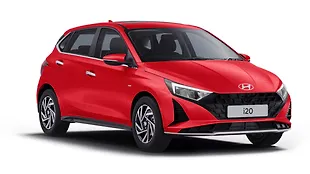
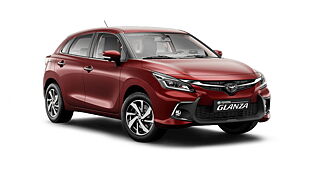
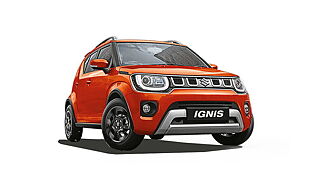
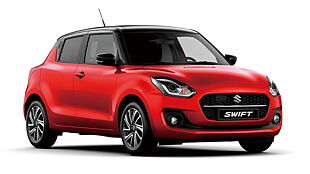

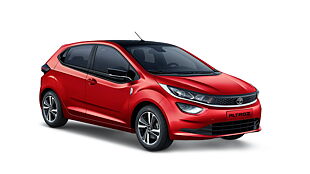
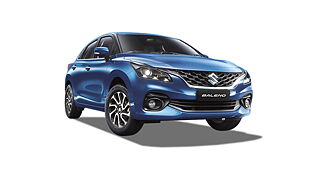
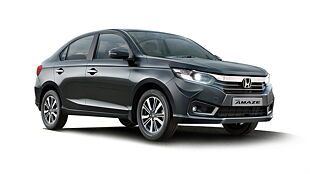
Colors
Reviews
- (344 Ratings) 204 Reviews
4.4/5
- Good experience and comfortGood experience and comfort in this car for drive and looks very awesome. Ac is very cool and light with very powerfull music touch screen is very good n speaker sound very good loud.Rating parameters(out of 5)5
Exterior
5Comfort
5Performance
5Fuel Economy
5Value For Money
About the ReviewerPurchase UsedDriven forFew thousand kilometersRead MoreWas this review helpful?12 - Sporty Car for small BudgetGood buy and worth the money. Engine is good. Overall look is nice with smooth engine, good pickup, good wheel base, nice grip and on road presence is nice. Audio system is of good quality, like the carRating parameters(out of 5)4
Exterior
4Comfort
4Performance
4Fuel Economy
4Value For Money
About the ReviewerPurchase NewDriven forFew thousand kilometersRead MoreWas this review helpful?30 - Baleno petrol zeta .Value for money variant.1. Average - 23 to 24 on highways tank to tank on fan mode. 2. Ride quality and engine performance is too good. 3. You won't feel any jerks on small pits since tyres are big. 4. No noise. 5. Excellent service follow-ups by nexa showroom. 6. Sufficient boot space. Cost 8.40 lacs and with top end variant features. Not found any cons.Rating parameters(out of 5)5
Exterior
5Comfort
5Performance
5Fuel Economy
5Value For Money
About the ReviewerPurchase NewDriven forFew thousand kilometersRead MoreWas this review helpful?75


